Sleeping on your back might be the least popular sleeping position, but it’s the one with the most benefits. According to one national sleep survey, only 10% of respondents sleep on their backs, while the majority prefer sleeping on their side.
But learning how to sleep on your back can keep your spine aligned, which helps alleviate those unexplainable back, neck, and shoulder pains.
If you’re accustomed to flopping down on your belly or curling up on your side at the end of a long day, then the idea of switching your sleeping position might be inconceivable. After all, sleeping on your back isn’t necessarily as comfortable as your favorite sleeping position.
But the good news is that you can train yourself to switch sleeping positions. By employing the right strategies, you’ll soon find yourself enjoying deep, restorative sleep while you lie on your back. Here, we take a look at some of the benefits of sleeping on your back and tips you can follow to switch up your sleeping style with minimal discomfort.
What is the Best Way to Sleep?
Everyone has a preference for how they sleep, and the different sleeping positions have their own set of pros and cons. However, if you frequently find yourself waking up with aches and pains, then switching up your sleeping style might just be the best remedy.
Sleeping on your side is the most popular sleeping position, and it can be particularly beneficial for pregnant women and those who suffer from obstructive sleep apnea. But side-sleeping has also been linked to premature wrinkles and might cause you to wake up with a stiff neck or shoulders. Stomach sleeping is widely considered the worst sleeping position because it can cause back and neck pain.
Out of all the sleeping positions, many experts say that sleeping on your back is the best. It protects your spine and helps relieve pain by reducing pressure on your joints and muscles.
Benefits of Sleeping on Your Back

The main reason why sleeping on your back is considered the best is because it has the most benefits. Let’s take a look at some of them to understand why changing your sleeping style might help you get a better night’s rest.
Improve spinal alignment
One of the main benefits of learning how to sleep on your back is that it can improve spinal health. When you lie flat on your back, your head, neck, and shoulders are in a neutral position. Because your spine is able to maintain its natural curvature in this position, you’re less likely to wake up with aches and pains when you sleep on your back.
Check out Puffy mattress reviews from real customers and see how we compare with other brands.
Minimize fine lines and wrinkles
The secret to Jennifer Lopez’s flawless skin? She likes to sleep on her back, surrounded by pillows, to minimize the appearance of fine lines and wrinkles.
When you sleep on your side or stomach, your face is directly in contact with the pillow, which causes noticeable sleep lines and has been linked to premature aging. Sleeping on your back, on the other hand, prevents you from rubbing your face against the pillow, reducing your chances of developing fine lines and wrinkles. If you’re prone to getting acne, sleeping on your back means that you won’t come into direct contact with your pillowcase.
Reduce acid reflux
While sleeping on your left side is the most effective way to reduce acid reflux, sleeping on your back can also help, especially if you prop yourself up with a few pillows.
When you sleep flat on your back, you might find your acid reflux or heartburn gets worse. This is because the acid flows into your esophagus, aggravating the symptoms. So, it’s essential to elevate yourself, either with a few pillows or with the help of an adjustable base.
Studies have shown that sleeping on your back at an incline can reduce acid reflux because the stomach acid is able to return to your stomach and stay there.
Prevent headaches
Many factors can trigger a headache, including diet, stress, alcohol intake, and lack of sleep. But your sleeping position is also a lesser-known trigger. Sleeping on your stomach, in particular, can worsen headaches because your neck is twisted, causing a buildup of pressure.
However, sleeping on your back is the best position for preventing headaches. Because your spine is neutral, your muscles are completely relaxed.
Relieve congestion
If you’re experiencing a stuffy nose or congestion, sleeping on your stomach and side can cause even more discomfort. In this instance, the best way to get a good night’s sleep is to lie on your back and prop yourself up with a few pillows. Sleeping on your back can reduce blood flow to the head and decrease the build-up of mucus in your sinuses.
How to Sleep on Your Back: 5 Tips to Try

Switching to a different sleeping position isn’t easy by any means, but here are some tips you can try to make the transition easier.
1. Invest in an adjustable bed
An adjustable bed is a great way to start sleeping on your back, especially if you suffer from back pain. With an adjustable bed, you can completely customize your comfort and adjust the leg and head height of your bed, depending on your preference. Regular beds can place excessive strain on your spine and hips, but an adjustable bed base is designed to relieve pressure.
Since sleeping on your back in an inclined position is especially beneficial for relieving congestion and reducing the symptoms of heartburn, an adjustable base can easily help you prop your head up.
2. Choose a comfortable pillow
A good night’s sleep depends on the quality of your mattress, but a pillow is also equally important, especially if you’re trying to learn how to sleep on your back. To sleep comfortably, your neck needs to be supported well. Ideally, you should opt for a firmer pillow that’ll keep your head elevated in just the right way. A pillow that’s too high or too low can cause discomfort to your spine.
When choosing pillows, it’s also worth looking for options that’ll make your entire sleeping experience more comfortable. For instance, some people who sleep on their back may need additional pillows for their knees or lower back. Such pillows should be small and thin so that it doesn’t take up too much room in your bed.
3. Spread out
If you find it uncomfortable to sleep on your back even with the help of additional pillows, you may want to try spreading out on the bed like a starfish. All you need to do is mimic the sea creature and spread your limbs out until you feel comfortable. This position can prevent you from moving around and getting into a different position while you’re sleeping.
4. Avoid eating before bed
The one downside of sleeping on your back is that it can trigger heartburn and acid reflux, especially if you’re not lying down in an elevated position. However, you may be susceptible to heartburn and acid reflux in any position, particularly if you eat a large meal right before bed.
To ensure you’re able to sleep comfortably on your back, try to eat at least three hours before bed so that your body has sufficient time to digest the food. In case you’re unable to avoid eating a late meal, then make sure that you avoid fried foods, spicy foods, alcohol, and caffeine.
5. Try bedtime stretches
Trying a new sleeping position won’t necessarily feel comfortable from the start. You might go to sleep on your back and find yourself curled up in the fetal position when you wake up. You may even feel like you’re just not cut out to be a back sleeper because the position isn’t nearly as comfortable as your preferred sleeping style. But the good news is that stretching before bed can help.
Before you go to sleep, try to spend a few minutes doing some basic stretches to help you relax. If you have more time on your hands, you can also do a few yoga poses to help you unwind from the day’s stresses and get ready for bed.
Who Should Not Try Sleeping on Their Backs?

While being a back sleeper has its benefits, it’s not recommended for pregnant women and those who suffer from sleep apnea.
Sleeping on your back during the second and third trimesters is particularly inadvisable because the extra weight can put pressure on your vena cava, the main vein that’s responsible for returning blood to the heart. This added pressure can aggravate backaches, cause indigestion, and interfere with circulation. Doctors recommend sleeping on your left side for optimal blood flow if you’re pregnant.
On the other hand, if you suffer from sleep apnea, back sleeping can worsen your condition because your tongue and soft tissue can easily fall back to the throat and hinder breathing. If you prefer sleeping on your back, then sleeping in an elevated position might help you manage your symptoms. However, it’s important to note that sleeping on your side is the preferred position if you have sleep apnea or tend to snore at night.
The Bottom Line
Back sleeping may not come naturally to everyone, but if you think it may improve the quality of your sleep, it’s worth persevering. When you combine the right strategies and make a conscious effort to sleep on your back for a few weeks, you might notice that you’re able to sleep soundly through the night.
However, if you find that you’re unable to get comfortable despite your best efforts, keep in mind that your sleeping position is a matter of preference. Some positions may have more cons than others, but as long as you wake up without aches and pains and feel well-rested, then that’s all that matters.
Your Turn...
Do you sleep on your back? Share your thoughts in the comments.
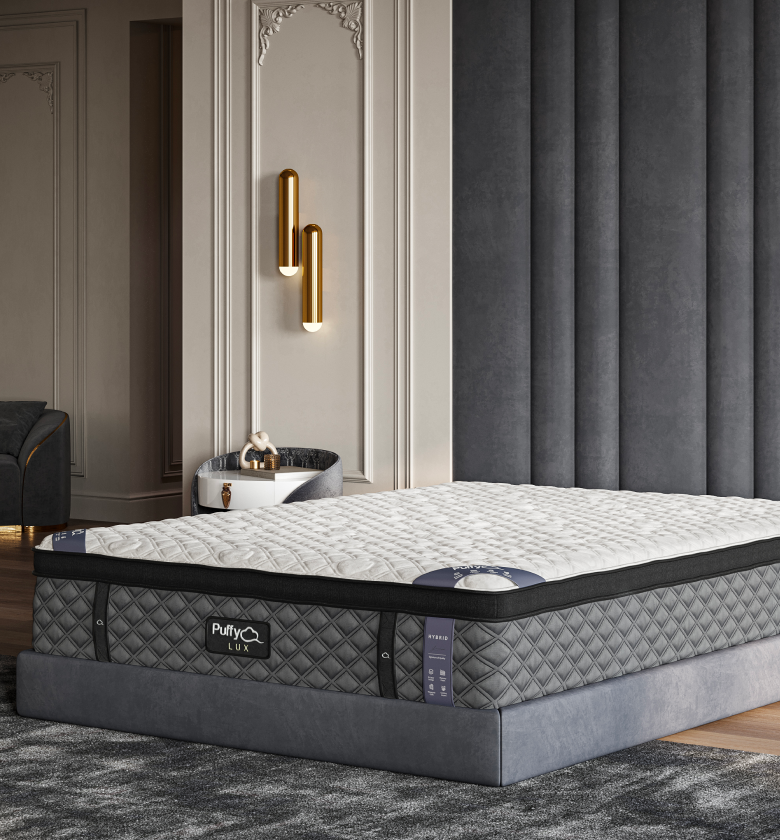
$1,350 in savings
Unlock your ultimate sleep solution with Puffy.
Explore our award-winning Puffy mattress collection with these extra luxury benefits:
- Award-winning comfort.
- Lifetime warranty.
- 101-night sleep trial.
- Free shipping and returns.
- 100% made in USA.
Disclaimer. We love sleep and we want you to get the best sleep possible. But we do not provide medical advice. This blog is intended for informational purposes only. It is not a substitute for professional medical info, diagnosis, or treatment. Never ignore professional medical advice in seeking treatment because of something you have read on our blog.
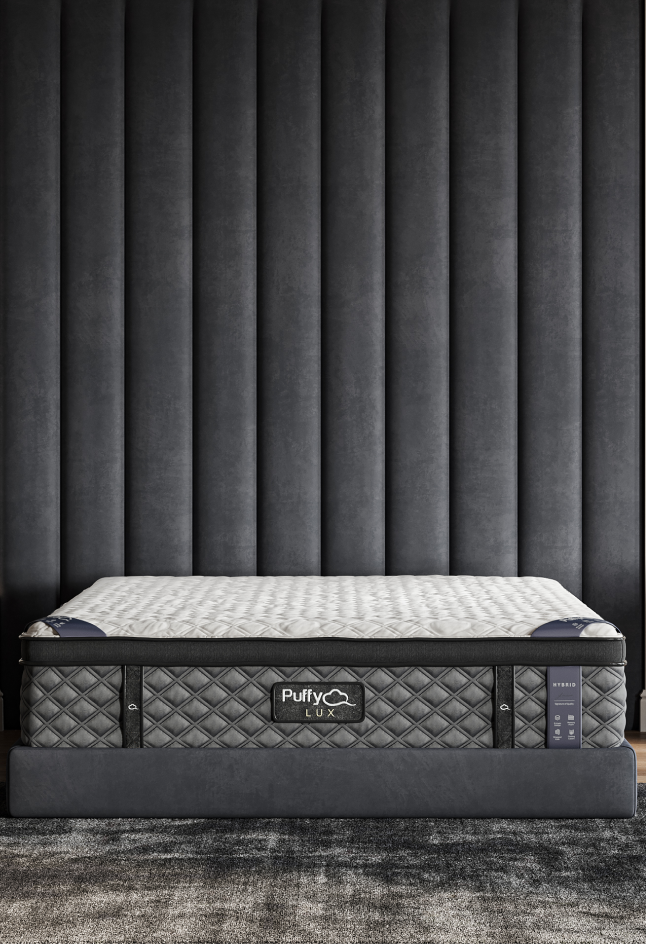
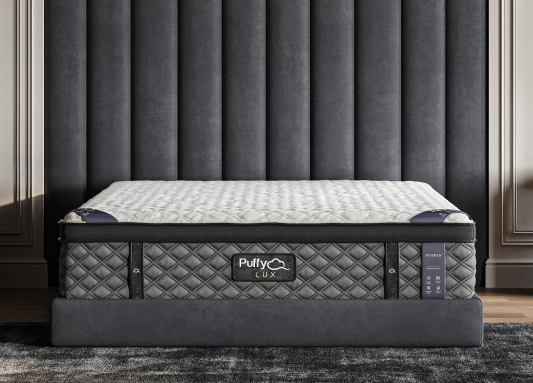
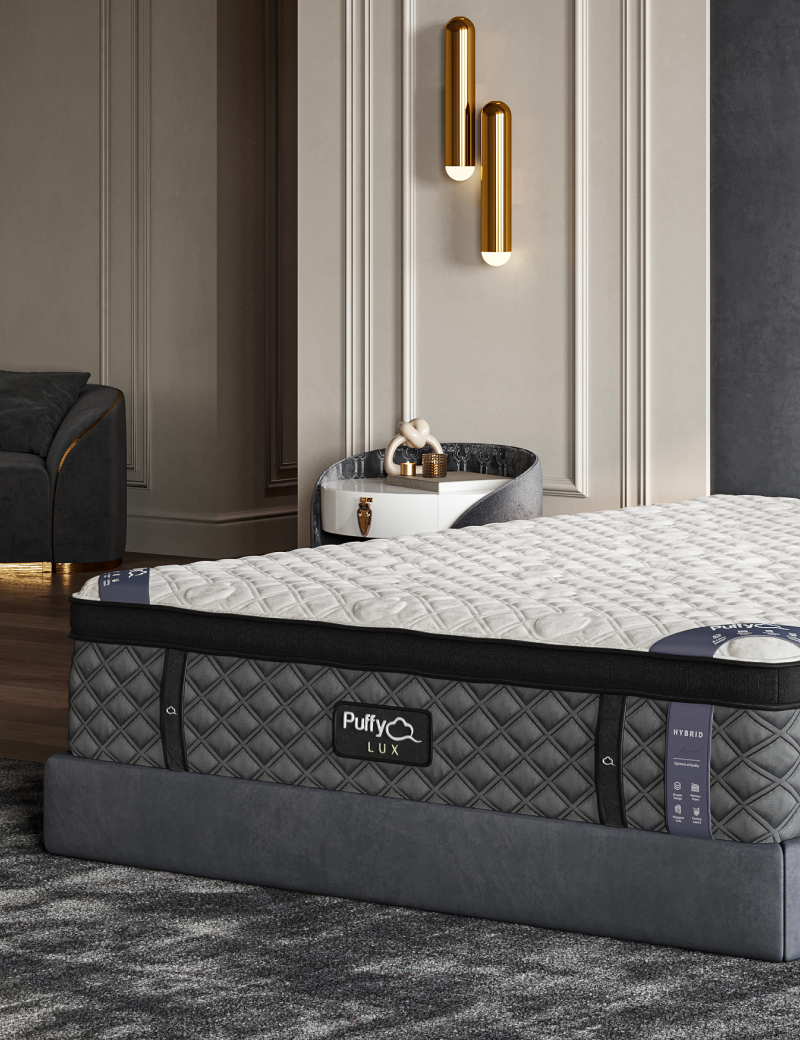


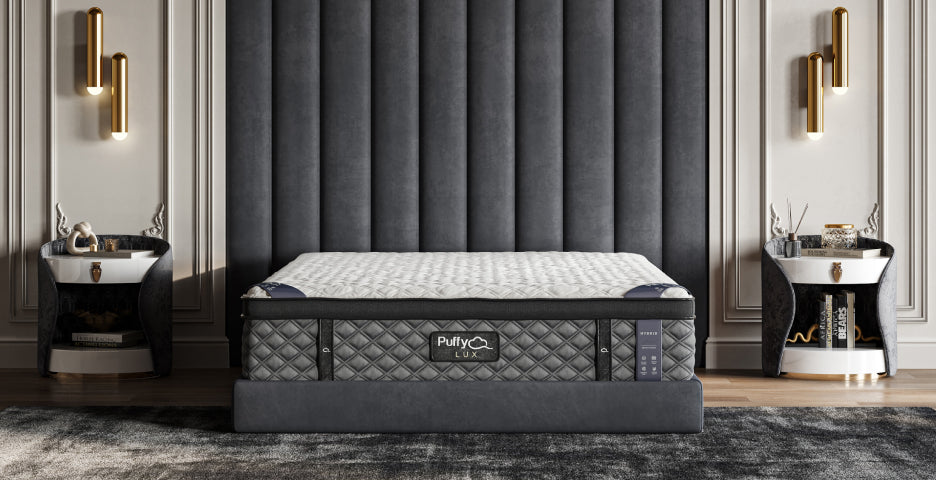
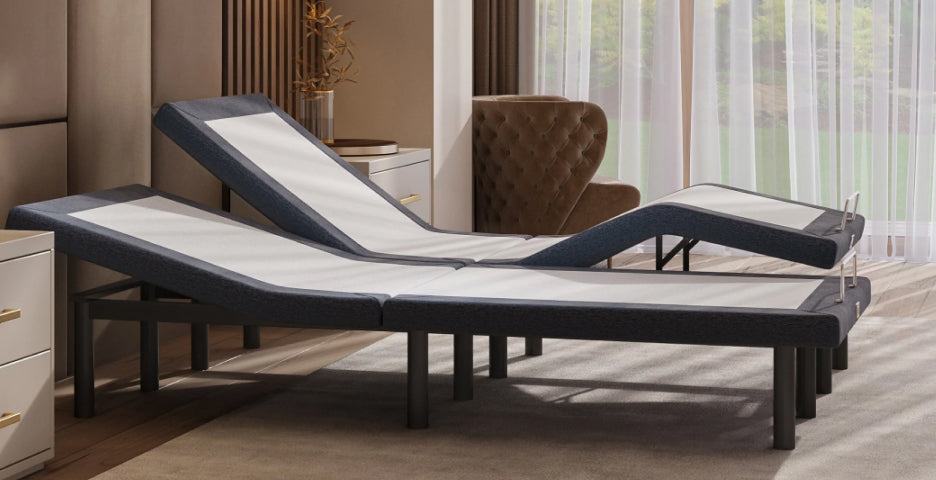
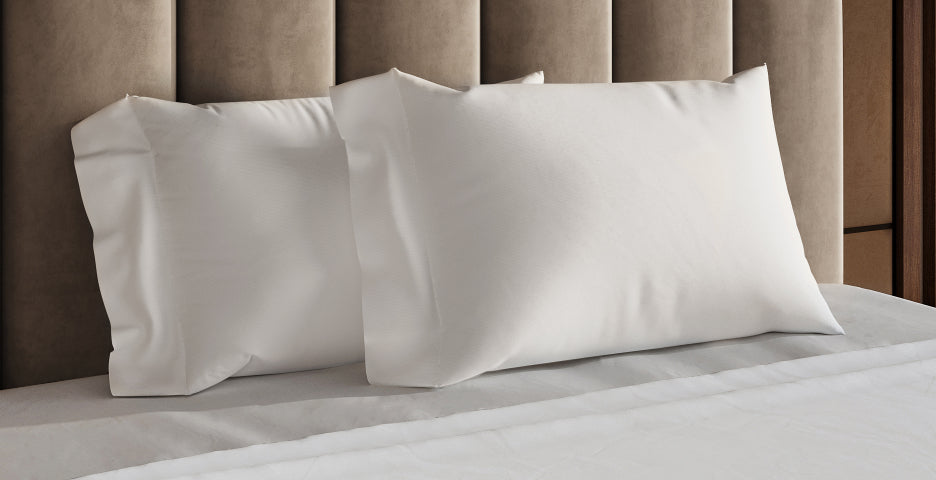







Leave a comment
Comments will be approved before showing up.